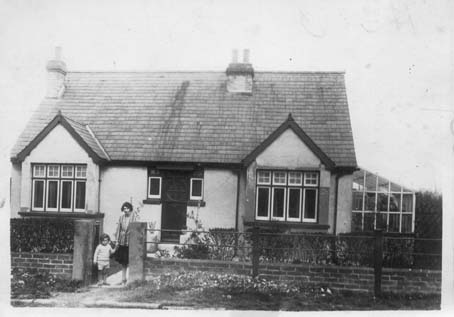The Amalgamation of Rainham and Gillingham
In 1928 the border of Rainham extended almost to Gillingham due to a marked increase in population and housing. This was in contrast to 1887 when a waterworks did not exist and only a few houses were located on the main road outside the village centre in the direction of Gillingham. Rainham had doubled from about 3,000 to over 5,800 people between 1887 and 1928 which put pressure on available amenities.
During the late 1920s Rainham Parish Council began to discuss the possibility of leaving the Borough of Sittingbourne and Milton and amalgamating with Gillingham, the biggest borough in Kent with a population of 57,000 people. The main arguments were that the borders almost touched, urban powers were too expensive for Rainham alone and better public services like main drainage would become available at an affordable cost.
Main drainage became the biggest issue as existing conditions were insanitary due to the subsoil becoming excessively polluted which meant that action was desperately needed to avoid a possible outbreak of disease. The growth of Rainham had exceeded its limitations with regard to the existing sanitary conditions. After pressure from the Ministry of Health Milton Rural Council considered main drainage for Rainham at a cost of £21,231 and came up with three options. 1. The Chatham Scheme which would connect Rainham with the Chatham and Rochester sewage system with Rainham at Motney Hill Works. 2. The Rainham Scheme meaning a separate sewage system for Rainham. 3. The Gillingham Scheme to convey the sewage to the Gillingham Disposal Works for treatment.
The overall cost of the various options showed that if Rainham amalgamated with Gillingham they would get definite and affordable main drainage so in March 1927 Rainham Parish Council drew up and submitted a statement to Gillingham. The council made a unanimous decision on the issue. The summary of the statement read:
‘That the amalgamation shall be on an equal rating basis in consideration of which the Gillingham Corporation agree to accept all present and future liabilities, all charges for improvements made in the parish to be a charge on the common fund of the combined districts.’
Gillingham Council took note of this then passed their own resolution stating that Rainham should be on equal rating with Gillingham and that rates would be increased to 14/4d. This accounted for main drainage, the widening of Rainham High Street, the erection of a town hall and offices and the extension of electric lighting without any other future financial commitments. This proved to be a much cheaper and better option for Rainham than what Milton could offer.
At a meeting at the Rainham County School on Thursday April 21st 1927 the proposed amalgamation was discussed by Rainham parish council. The main argument put forward was that if Rainham remained with Sittingbourne and Milton they would have to pay the full cost of £21,231 for main drainage but if they amalgamated with Gillingham they would pay substantially less and have the widening of roads, a town hall and offices included in the cost. The Mayor of Gillingham also said that the river frontage from Gillingham to Rainham could be developed and electric lighting extended to Rainham. All the work planned by Gillingham Council for Rainham was to be a gradual process.
Questions about whether Rainham would have to change from the Diocese of Canterbury to the Diocese of Rochester and from Sittingbourne to Gillingham constabulary remained unresolved but amalgamation proceeded.
On May 1st 1927 a referendum took place in Rainham to gauge the attitude of residents towards amalgamation with Gillingham. In the first referendum ever to take place in Rainham a disappointing 27% of voters turned out. Those who voted for amalgamation totalled 565 and those against 124 resulting in a majority of 441 in favour of amalgamation. Some opposition did exist in Gillingham because of the proposed rates increase but this did not prove to be a big obstacle.
On April 1st 1929 a ceremony took place at the border between Rainham and Gillingham at Rainham Mark where a blue ribbon extended across the road. Troops of boy scouts and girl guides from Rainham and Gillingham and the Gillingham and Rainham Fire Brigades were present. Important municipal figures in attendance included Mr Treacher the Mayor of Gillingham, Gillingham fire chief Mr F White, Rainham fire chief Mr D Smith, Gillingham Division Constabulary superintendent Paramour and Sittingbourne superintendent Hoare. Others included the Lord Bishop of Rochester, Alfred Hinge the chairman of Milton Rural District Council and Rainham councillors W Holding, R Quinnell, and G Brown who had played a big part in pushing for the amalgamation of Rainham with Gillingham.

Photo of a house in Marshall Road in 1929 at the time of the amalgamation ceremony at Rainham Mark
At the ceremony the Mayor of Gillingham cut the ribbon then Mr Robert Quinnell and the mayor shook hands as a symbol of municipal friendship. This was followed by a speech from Robert Quinnell at what turned out to be a historic and moving event after which the dignitaries went for a special luncheon at the new Rainham Co-operative Society hall in Rainham High Street.
Other activities on the day included a football match between Rainham and Gillingham fire brigades on Rainham Recreation Ground while the band of the Royal Marines played music on an improvised band stand. This was followed by displays by the United Brigades including life-saving from a burning house. In the evening a firework display took place with the fiery motto ‘Success to Greater Gillingham’ lighting up in the sky. Amalgamation had finally taken place and Rainham remains part of the Borough of Gillingham today.
David Wood.










































































































































